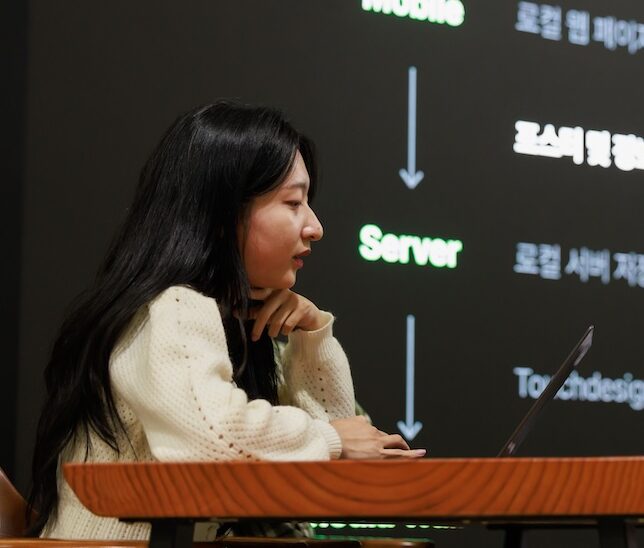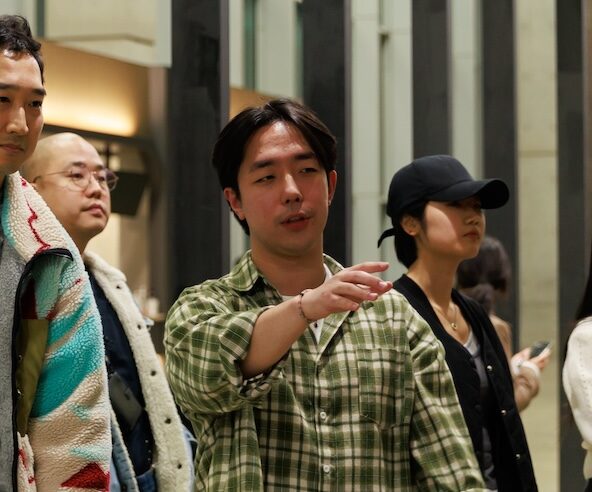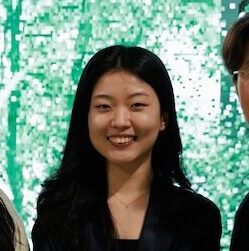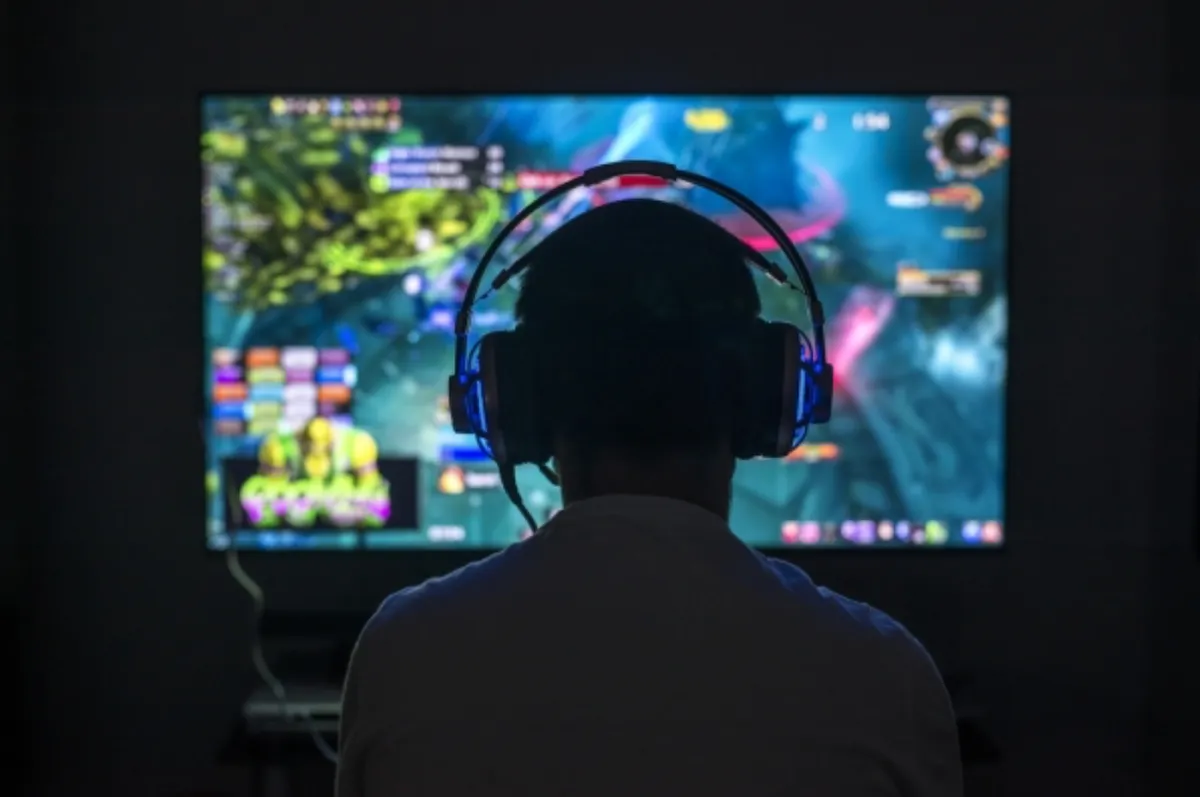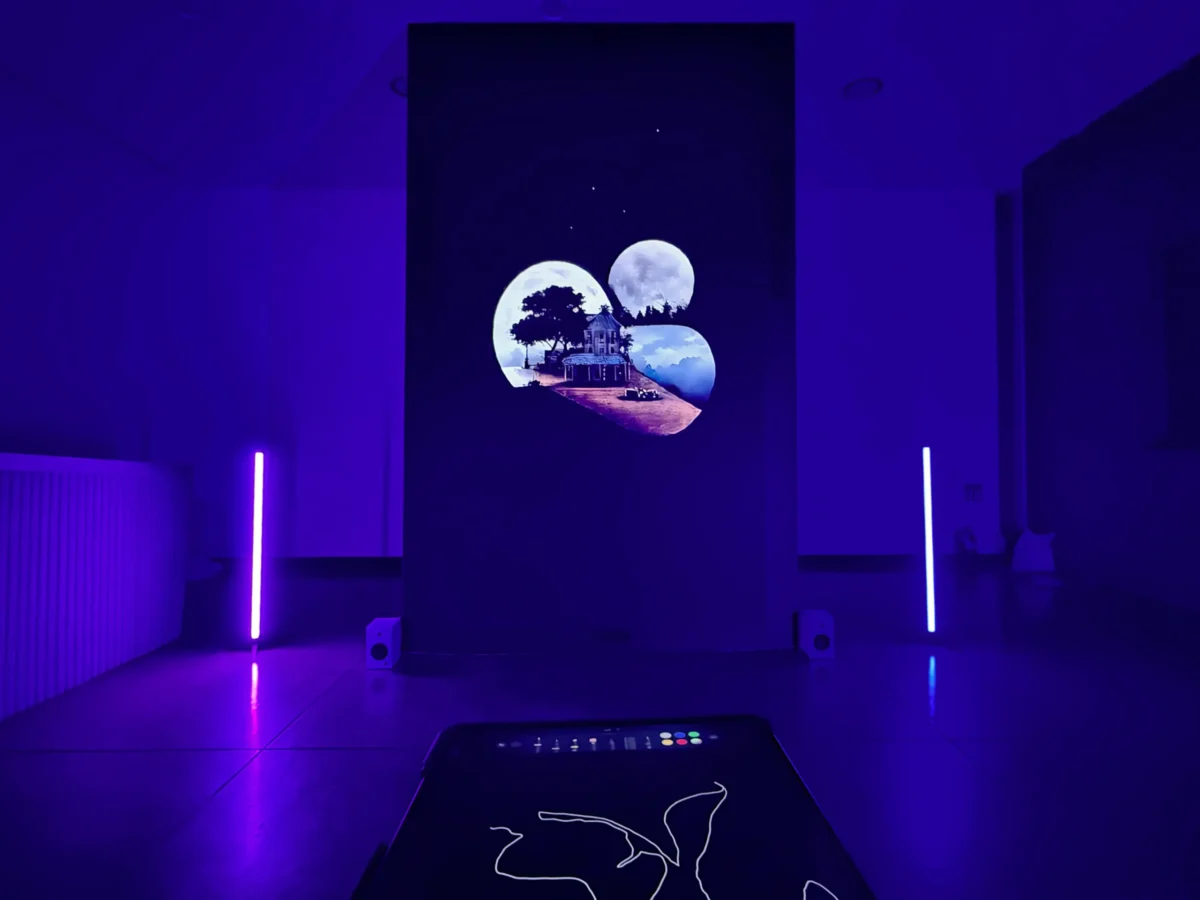| [People]introduces the future direction of art education that the Art Collider Lab (hereinafter referred to as AC Lab) of the Convergence Arts Center seeks and aims to pursue through people who have worked with AC Lab. |
“They could have just walked past, but instead, they instinctively stepped in and started engaging with it. Watching them participate so naturally, I thought, ‘Ah, this is it.’”
On November 11 last year, visitors to the Lee O Yung Arts Theater at Korea National University of Arts(K-Arts) were greeted by an unusual sight—a poster that was anything but ordinary. It reacted instantly to even the slightest touch, bursting into dynamic visuals, drawing curious onlookers into an unexpected interaction. The area outside the theater quickly turned into a lively hub.
This wasn’t just a poster; it was a work of art. In-Young Kim and Tae-Yang Yoo developed ‘Bloom Boom Bash!’ as part of Interactive Media Wall Creation Project supported by Art Collider Lab at K-Arts. “It was an attempt to create a new artistic experience that would open up a space for dialogue,” explains artist In-Young Kim(26). Kim was one of four artists who set out to push the boundaries of artistic interaction. Alongside Tae-Yang Yoo(30), he transformed the theater into a stage for interactive engagement, while Kwang-Hyun Lee(30) and Min-Jae Lim(30) took over the campus library with their experimental XR performance piece, TRPG:TRPG. Their goal? To disrupt the quiet, contemplative atmosphere and invite audiences into a participatory artistic experience. What drove these emerging artists to embed their work with audience interaction? Through this interview, we dive into their inspirations and creative processes.
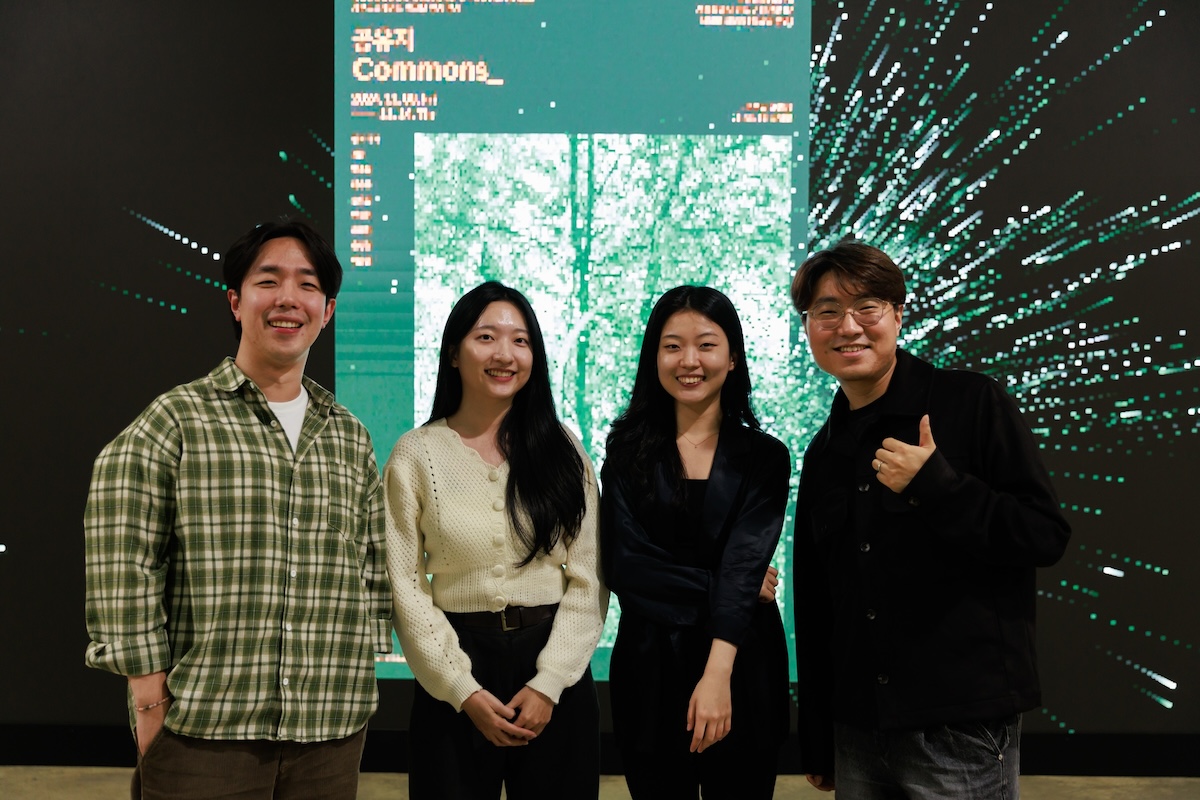
From left artist Tae-Yang Yoo, In-Young Kim, Min-Jae Lim, Kwang-Hyun Lee
[Chapter .1] Curious About People, These Artists Found Their Way to XR
—First, tell us about yourselves and the kind of art you create.
Min-Jae Lim: “I recently completed my second year of master’s program in Multimedia Film at K-Arts. My focus is on technology-driven art, but what truly fascinates me is people—the way they think and react. That’s why I specialize in interactive art.”
In-Young Kim: “My primary field is interaction design, and I’m currently pursuing my master’s in Interaction Design at K-Arts. My background in psychology helps me incorporate affordance-based design principles into my work.“
Kwang-Hyun Lee: “I studied arts management and later shifted to theater. I wanted to create performances that engage audiences more intimately, which eventually led me to Extended Reality (XR). I even worked at a VR company, where I developed immersive theater experiences in virtual reality.”
Tae-Yang Yoo: “I work as an XR and interactive developer. My undergraduate studies focused on traditional arts theory, but I’ve always been passionate about computers and early adoption of technology. My interest naturally evolved into XR. Interactive art, in particular, aligns well with my analytical approach—formulating hypotheses and refining outcomes through experimentation.”
—Despite working in a highly futuristic field, you all have strong backgrounds in the humanities. That’s intriguing.
Min-Jae Lim: “I majored in business during my undergraduate studies, but when you think about it, both business and art raise similar questions. People often think of business as being all about making money, but at its core, it’s about understanding human desires and relationships. In art, this translates into exploring audience interaction.”
Tae-Yang Yoo: “I completely agree. My original field of study was philosophy. While philosophy was definitely fascinating, I always had the question, ‘How can I do something with this?’ Interactive art became my answer to that question.”
In-Young Kim: “Interaction design and interactive art cannot exist without people. My curiosity about people is what led me to explore these fields through media technology.“
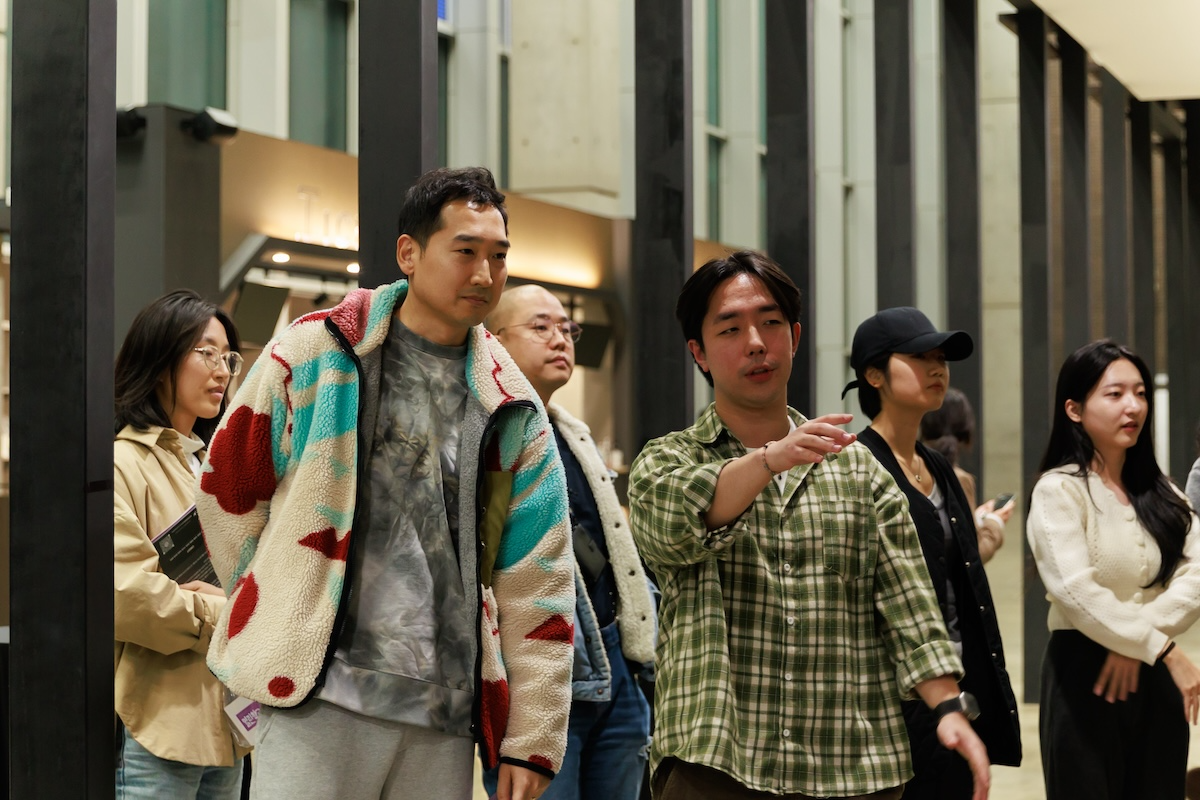
Tae-Yang Yoo(center) is explaining the work to the audience
—You identify as XR artists. What exactly is XR art, and why did you choose this field?
Kwang-Hyun Lee: “By now, most people are familiar with Virtual Reality(VR) and Augmented Reality(AR). Extended Reality(XR) is an umbrella term that encompasses both. It expands the boundary between the real and virtual worlds. Let’s take the theater piece ‘Find Willy’ as an example. The central theme is teleportation. In traditional theater, teleportation is difficult to portray. In film, it’s just a visual effect that doesn’t involve the audience. But with XR, audiences can actively participate in the teleportation process, making the experience far more engaging.“
Min-Jae Lim: “I believe great art should bring audiences closer. XR ensures that the audience is never distant—it places them in the first-person perspective, fully immersed in the experience. The ending, too, is determined by their choices. As someone fascinated by human behavior, this excites me.”
Tae-Yang Yoo: “What drew me to XR was the lack of a predefined ‘right answer’. Traditional arts follow structured, mentor-apprentice models where the ‘correct’ way is already established. XR, on the other hand, is an unexplored frontier. It’s still evolving, which means endless opportunities for creators.“
[Chapter .2] Art Collider Lab—A Creative Zero-Gravity Zone
— Your recent exhibition was the culmination of K-Arts’ Interactive Media Wall Creation Project, organized by Art Collider Lab. How did you get involved?
Tae-Yang Yoo: “I’ve been connected to Art Collider Lab since 2018. Back then, new technologies and software were emerging rapidly, but K-Arts didn’t offer many opportunities to learn them. The lab became the only space where I could explore. It played a crucial role in shaping who I am today.” (laughs)
Min-Jae Lim: “I had prior experience with the lab, and every project I participated in left a lasting impact. What stood out was the people. The interdisciplinary art scene often lacks good collaborators and effective communication. But Art Collider Lab fosters an environment where the process matters more than the results, making it an ideal space for open experimentation.”
In-Young Kim: “Design can be an isolating field, and failure feels like a heavy burden. But at the lab, that burden is shared. You’re surrounded by like-minded people, and there’s an ecosystem of support for brainstorming and feedback.”
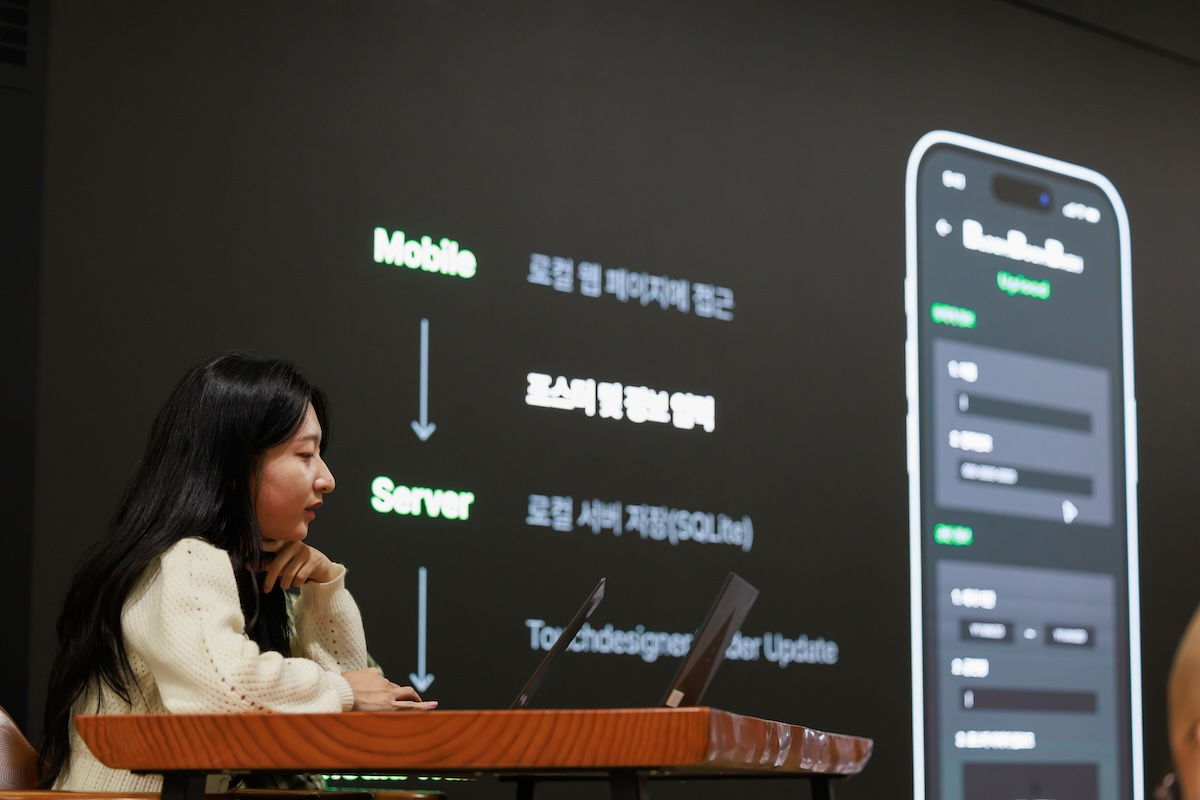
In-Young Kim(photo) explained, “Art Collider Lab is an optimized environment for collaboration”
—Art Collider Lab is a research institution pioneering the future of education at K-Arts, challenging the limitations of traditional teaching methods. How does it differ from conventional education?
Kwang-Hyun Lee: “What struck me the most was how the lab doesn’t fixate on results. That was the biggest difference from conventional education. Because the lab fosters that kind of environment, artists participating in its projects naturally tap into their hidden drive for experimentation. Without the pressure of results or fear of failure, we feel free to try anything.”
Tae-Yang Yoo: “Exactly. Most arts funding programs tend to predefine the outcomes they expect, and this framework can end up restricting an artist’s creativity. Art Collider Lab, on the other hand, is far more open-ended. To put it bluntly, even ‘failing miserably’ is considered a valuable experience—it’s encouraged and supported. Without the pressure of producing a polished final product, we can freely experiment with various technologies. We can also discuss challenges with artists who have ‘failed’ countless times before and find practical solutions. Personally, I feel like this process has helped me level up tremendously.”
In-Young Kim: “For me, what stands out the most is the power of collaboration. It’s hard to describe, but there’s this shared spark—people here have similar needs and curiosities, which makes it easier to exchange ideas. It reduces the risk of getting stuck in your own head and allows peer learning to happen naturally.”
Tae-Yang Yoo: “I completely agree. Since my background was in traditional arts, I was used to a master-apprentice education model. But at Art Collider Lab, I discovered what peer learning really means—and I experienced firsthand just how powerful it is.“
Min-Jae Lim: “The lab fosters seamless communication, which is essential for interdisciplinary work. Personally, I sometimes struggle to communicate with developers. If I can’t fully understand a concept myself, how can I convince someone else? This leads to a lot of stagnation. But the people at Art Collider Lab are different. They actively think about how to make technical concepts and jargon understandable. Only people who genuinely care about communication remain in this space—it’s a unique environment.”
Kwang-Hyun Lee: “Absolutely. More than anything, the lab itself has a strong understanding of what it’s doing. When working with external arts funding programs, I’ve often noticed that the organizers don’t really grasp the artistic or technological context. It sometimes feels like they’re just chasing trends. And once the project is funded, the organizers often step back, leaving the artists to figure things out alone. But at Art Collider Lab, they truly understand the technological landscape. That’s why the way they co-develop projects with artists is fundamentally different.”
[Chapter .3] Our Art is Completed by the Audience’s Hands
—Tell us about the works you created for the showcase.
Tae-Yang Yoo: “We were assigned the theater as our exhibition space, and we immediately thought about its history. Over the years, countless performances had been staged there, each leaving behind posters. That became our inspiration—giving abandoned posters new life. That’s how Bloom Boom Bash! was born. The idea was to revive forgotten performances and turn them into a new performance.”
In-Young Kim: “At first, we considered taking a more artist-driven approach. But since interactive art is still a relatively new concept, we didn’t want to make it overly complex or alienating. We focused on making it engaging and accessible.”
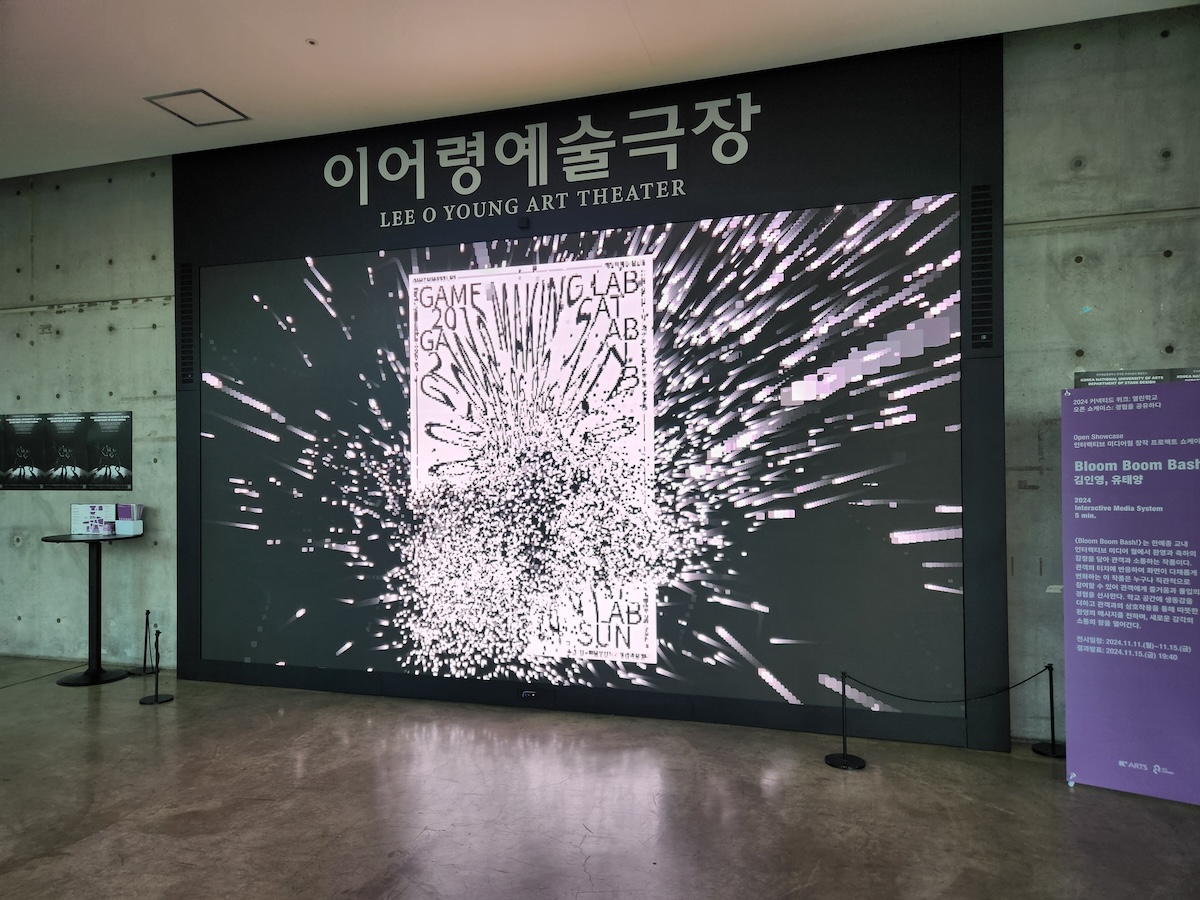
The interactive media system “Bloom Boom Bash!” by In-Young Kim, Tae-Yang Yoo
Tae-Yang Yoo: “The posters are displayed in a row, but when someone approaches, they each respond individually. Depending on the participant’s movements, the visuals might shatter into fragments or suddenly scatter away. Visitors can freely interact with the wall, play around with it, and even take photos. You could think of it as an interactive media wall designed for engagement.”
Kwang-Hyun Lee: “Our piece, TRPG:TRPG, is an XR performance that incorporates strong game-like elements. The audience plays a role in determining how a new civilization takes shape on another planet.”
Min-Jae Lim: “Eight participants form teams and choose themes like ecology, engineering, society, or architecture. The game’s outcome shapes the future of that world. In a way, it’s a social experiment.”
Kwang-Hyun Lee: “In reality, interactive media art has a lot in common with games. It’s about participation, experience, and enjoyment—just like a game. When I first heard our exhibition would take place in a library, my first thought was, ‘Let’s make the library as noisy as possible.’ It was our way of playfully ‘hacking’ the space—legally, of course.”
Min-Jae Lim: “A new planet, a new universe—these concepts tap into fundamental human desires. Ultimately, our piece is a game about exploring those desires. And doesn’t that concept fit surprisingly well within a library?”(laughs)
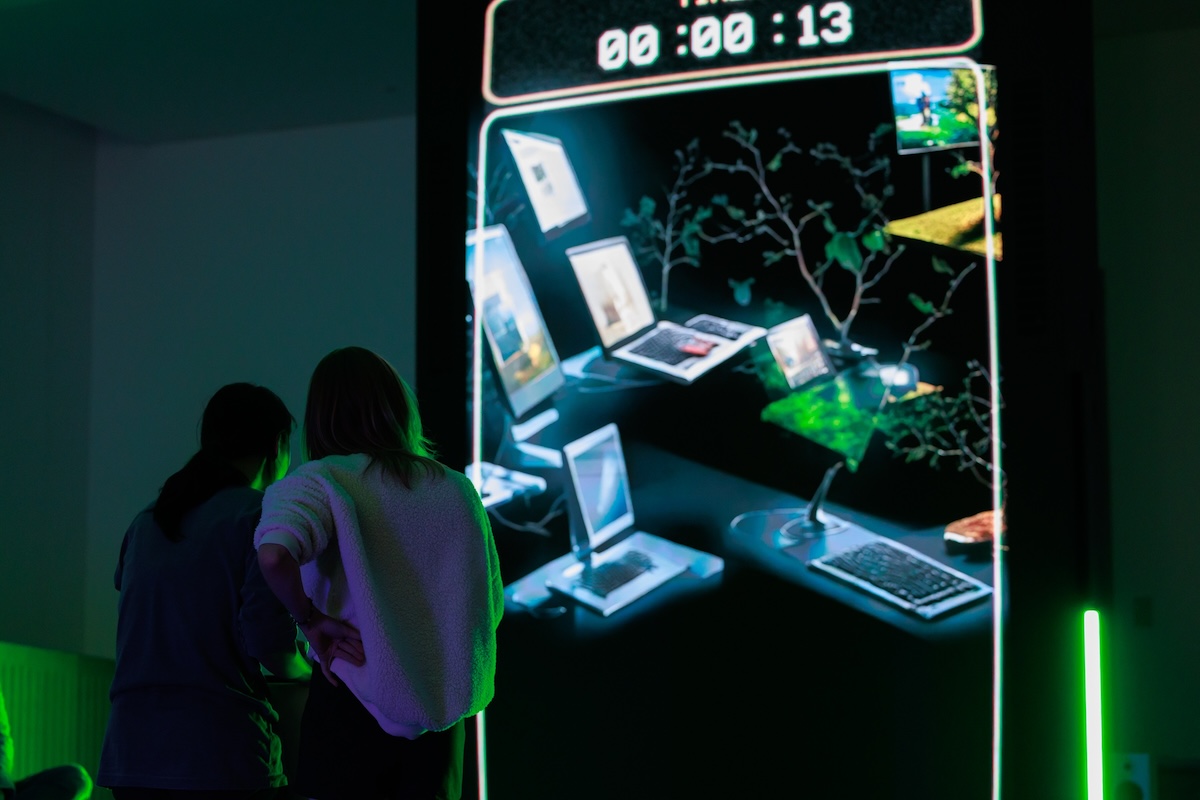
The audience participating in “TRPG:TRPG“
—Since interactive art relies on audience participation, their reactions must have been especially intriguing.
In-Young Kim: “Because theaters attract such a diverse range of people, I was actually quite nervous. But as soon as we set it up, people started engaging with it instinctively—without hesitation. Watching them participate so naturally, I felt a huge sense of relief, thinking, ‘At least in terms of UX, this is a massive success.’”
Kwang-Hyun Lee: “For me, XR art is often more interesting when I’m watching the audience rather than the artwork itself. Unlike traditional art forms, the audience doesn’t always follow the creator’s intended path. There’s an element of unpredictability that makes it exciting. This time was no exception—I was constantly reminded of that.”
Min-Jae Lim: “From the beginning, we deliberately left plenty of space for audience participation. In fact, observing how people reacted to it was one of our core objectives. Watching them navigate within the framework we had set—negotiating, debating, and shaping their own narratives—I thought to myself, ‘Ah, this is what it means to create art with the audience.’”
Kwang-Hyun Lee: “I completely agree—the audience completes the artwork. We actually ran our performance in two separate sessions, and based on audience reactions from the first, we made major adjustments to the second. Their participation directly influenced how the piece evolved.”
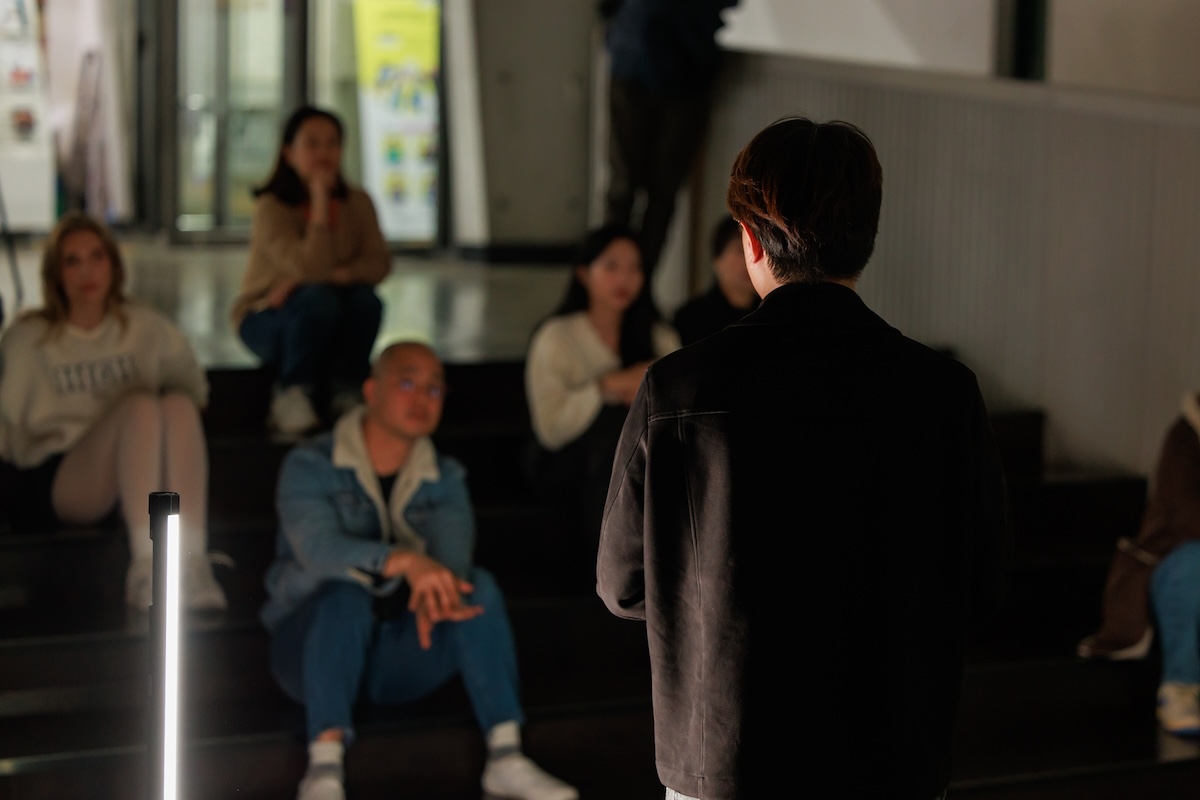
Kwang-Hyun Lee(behind) explaining to the audience the work of TRPG:TRPG
—What did you learn from the experience?
Min-Jae Lim: “This project was a massive challenge—we built an entire universe from scratch. It reinforced the importance of the process rather than obsessing over the end result.”
Tae-Yang Yoo: “Every Art Collider Lab project has accelerated my growth. They create an environment where failure is allowed—and even encouraged. This freedom helped me confront why failures happen and turn them into learning experiences.”
In-Young Kim: “More than anything, I gained great collaborators. This project reminded me that at the core of interdisciplinary arts is the fusion of people.”
/ written by TJ
Related Videos
